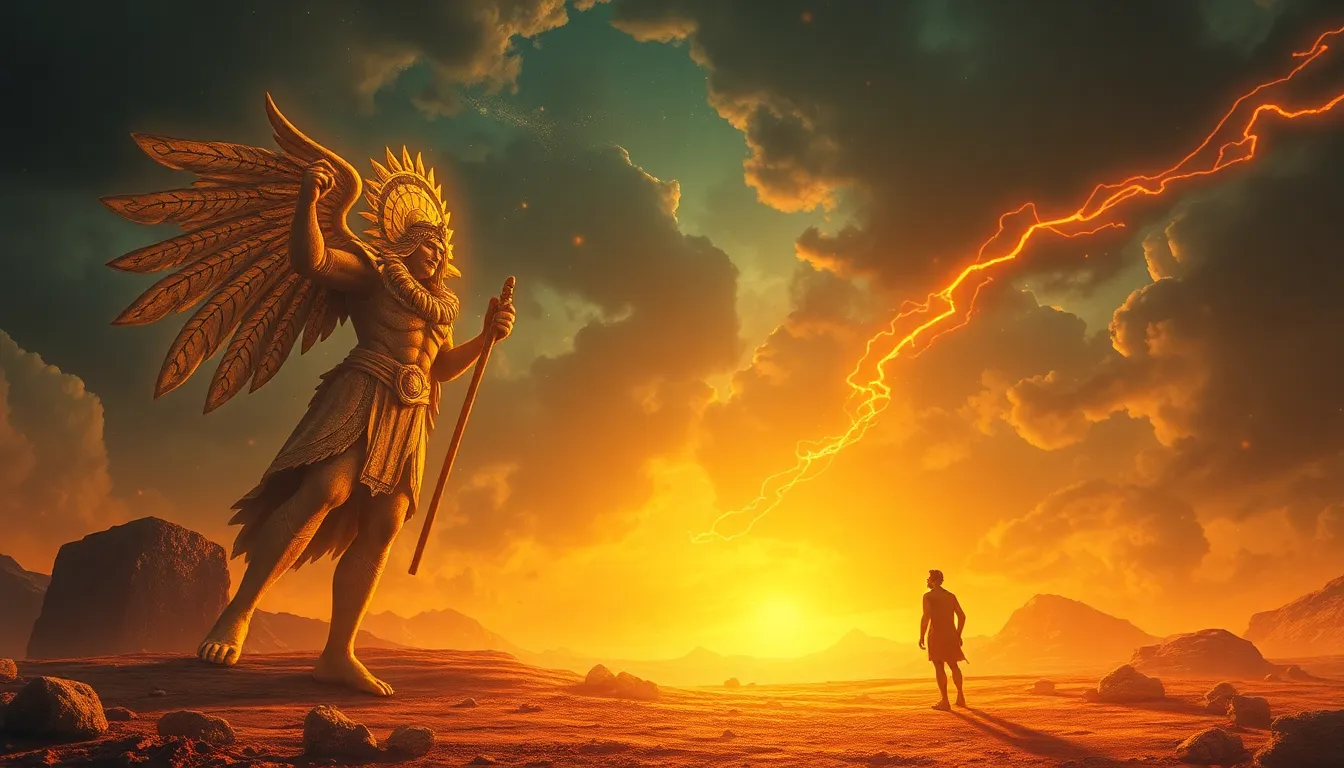The Flood Myths of the Middle East: Water in Ancient Traditions
I. Introduction
Flood myths are prevalent narratives found in various cultures around the world, often depicting a great deluge that wipes out humanity or a significant part of it, followed by a divine promise of renewal. These myths carry profound significance, reflecting humanity’s fears, beliefs, and the relationship with nature.
The Middle East, often referred to as the cradle of civilization, is a region rich in cultural history and diversity. Encompassing ancient kingdoms such as Mesopotamia, Sumer, and Egypt, this area has produced a plethora of flood myths that reveal insights into the societies that revered them.
Water, in ancient traditions, symbolizes both life and destruction. It is revered as a source of sustenance, yet it also embodies chaos and divine wrath, creating a complex relationship that is intricately woven into the fabric of these cultures.
II. Historical Context of Flood Myths
The origins of flood myths can be traced back to ancient Mesopotamia, where the Tigris and Euphrates rivers shaped the life and beliefs of its inhabitants. These rivers, while providing fertile land, also brought devastating floods that could destroy crops and settlements.
Environmental factors such as these significantly influenced the creation of myths. The unpredictable nature of seasonal flooding led to narratives that explained these phenomena through the lens of divine intervention.
When comparing Mesopotamian flood narratives with those of neighboring regions, such as the biblical accounts from the Hebrew Bible, similarities emerge. Key themes often include divine discontent, human survival, and the promise of a new beginning, illustrating universal human concerns.
III. The Epic of Gilgamesh: A Key Flood Narrative
The Epic of Gilgamesh, one of the oldest known pieces of literature, contains one of the earliest flood narratives. This epic not only captures the adventures of King Gilgamesh but also includes the story of Utnapishtim, a character who survives a great flood.
In the tale, Utnapishtim is warned by the god Ea about an impending flood meant to eradicate mankind. He builds a massive boat, saves his family and various living creatures, and ultimately finds solace on a mountain when the waters recede.
The themes present in this narrative—survival, divine judgment, and rebirth—echo throughout many cultures’ flood myths, highlighting humanity’s struggles against overwhelming natural forces.
IV. The Biblical Account: Noah and the Great Flood
The story of Noah’s Ark, found in the Book of Genesis, is perhaps the most well-known flood narrative today. In this account, God decides to cleanse the earth of its wickedness through a great flood but spares Noah, his family, and a pair of each animal species.
When comparing this biblical narrative with the Epic of Gilgamesh, several parallels can be drawn, including the dimensions of the ark and the sending out of birds to find dry land. However, the theological implications differ, with the biblical account emphasizing themes of covenant and grace.
These narratives serve as moral lessons, with the biblical account particularly focusing on themes of obedience and faith in the face of divine judgment.
V. Flood Myths in Other Middle Eastern Cultures
Beyond Mesopotamia and the biblical tradition, other Middle Eastern cultures have their own flood narratives. Sumerian and Akkadian myths often tell similar tales of divine wrath and survival, reinforcing the significance of these stories across different civilizations.
- Sumerian Flood Stories: Early texts describe gods who decide to flood the earth due to human misbehavior.
- Akkadian Perspectives: These narratives often feature a hero who survives a cataclysm, paralleling Utnapishtim and Noah.
Ancient Egyptian culture also held a unique perspective on water and flooding, particularly through the annual inundation of the Nile, which was celebrated as a life-giving force rather than a destructive one.
Lesser-known flood narratives from the Levant and Arabian Peninsula further illustrate the widespread nature of these themes in ancient traditions, suggesting a common ancestral memory of catastrophic flooding across cultures.
VI. Symbolism of Water in Ancient Traditions
Water in ancient traditions carries profound symbolism, representing life, death, and renewal. It is often depicted as a cleansing force, capable of both destruction and sustenance.
- Life: Water is essential for agriculture and survival, making it a symbol of fertility and prosperity.
- Death: Floods can represent judgment and chaos, reminding humanity of its mortality.
- Renewal: Post-flood narratives often signify a fresh start, reflecting the cycle of life.
Rituals surrounding water, such as purification rites, further illustrate its sacred status in ancient religions, reinforcing the dual nature of water as both a life-giving and destructive force.
VII. Archaeological Evidence of Flooding in the Middle East
Archaeological discoveries have uncovered evidence supporting the existence of catastrophic floods in the Middle East. Sites such as ancient Ur and Nippur reveal layers of sediment consistent with large-scale flooding events.
The relationship between these archaeological findings and mythological narratives is intriguing. As natural disasters occurred, they likely influenced the creation of myths that sought to explain these events.
- Case Studies:
- The evidence found in the sediments of the Tigris and Euphrates rivers.
- Excavations at sites like Çatalhöyük show signs of flooding and settlement disruption.
VIII. The Influence of Flood Myths on Later Cultures
Flood narratives have transcended their origins, influencing later cultures and religious texts. The motifs of survival and divine intervention have been adapted in various forms throughout history.
Significant adaptations can be observed in later religious texts, including the Quran, which presents its own version of the flood story. These narratives have also permeated literature, art, and popular culture, demonstrating their enduring relevance.
IX. Modern Interpretations and Relevance
In today’s context, flood myths resonate with ongoing environmental concerns. The increasing frequency of natural disasters and climate change has led to a renewed interest in these ancient stories.
Mythology helps frame contemporary discussions on climate change, offering insight into humanity’s historical relationship with nature. The continued fascination with these narratives is evident in popular culture, where they are often reinterpreted in films, literature, and art.
X. Conclusion
The flood myths of the Middle East reveal profound truths about human nature, the environment, and the divine. Through narratives that span cultures and centuries, these stories reflect humanity’s enduring struggle against the forces of nature and the quest for meaning in the face of catastrophe. The symbolism of water, as both a life-giving and destructive force, continues to resonate, offering valuable lessons as we navigate the challenges of our contemporary world.



